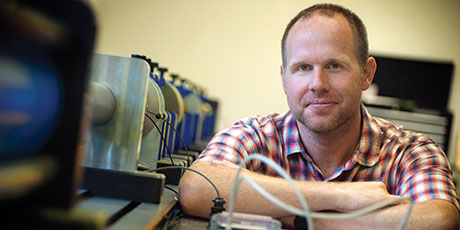mimicry
I, Robot
Engineers look to theater techniques to create more responsive machines

Julienne Greer is helping scientists build robots with greater emotional authenticity.
To make better robots, engineers are turning to an unlikely source: the theater.
“Performance, connection, and authenticity are the gold standard that should be hoped for in the creation of the relationship between humans and robots,” says Julienne Greer, theatre arts senior lecturer at UTA. “We can attain these goals through the specific application of understanding human behavior, gesture, shape, and relationships.”
As a producer, director, and actor, Dr. Greer knows the techniques that help draw people’s deepest emotions to the surface. Now, she’s using that knowledge to help scientists and robotics engineers build more responsive robots.
“In addition to considering how a robot should be wired, don’t we want the people who design this technology to consider how human beings express feelings and interact with one another?” Greer asks.
The hope is that by categorizing behaviors or gestures and understanding how they create specific emotions in humans, engineers and roboticists will be better able to apply that information in their robotics programming.
“It’s not in the algorithms and models, per se, that you find the creation of an actual relationship between humans and social robots, but in the measure of how algorithms and models serve the purpose of building connection and authenticity,” says Giuseppe Boccignone, keynote speaker at the 2014 International Conference on Social Robotics and computer science associate professor at the University of Milan. “Dr. Greer is showing us that addressing performing arts techniques can be vital to building emotional relationships between ‘agents,’ either human or artificial.”
The plan now is for Greer to develop a data-capturing test that would, among other things, find out the response of humans to robots confronting a variety of circumstances.
“We must be specific in programming robots to respond to, and eventually learn from, the human relationships they will be a part of,” she says.

















